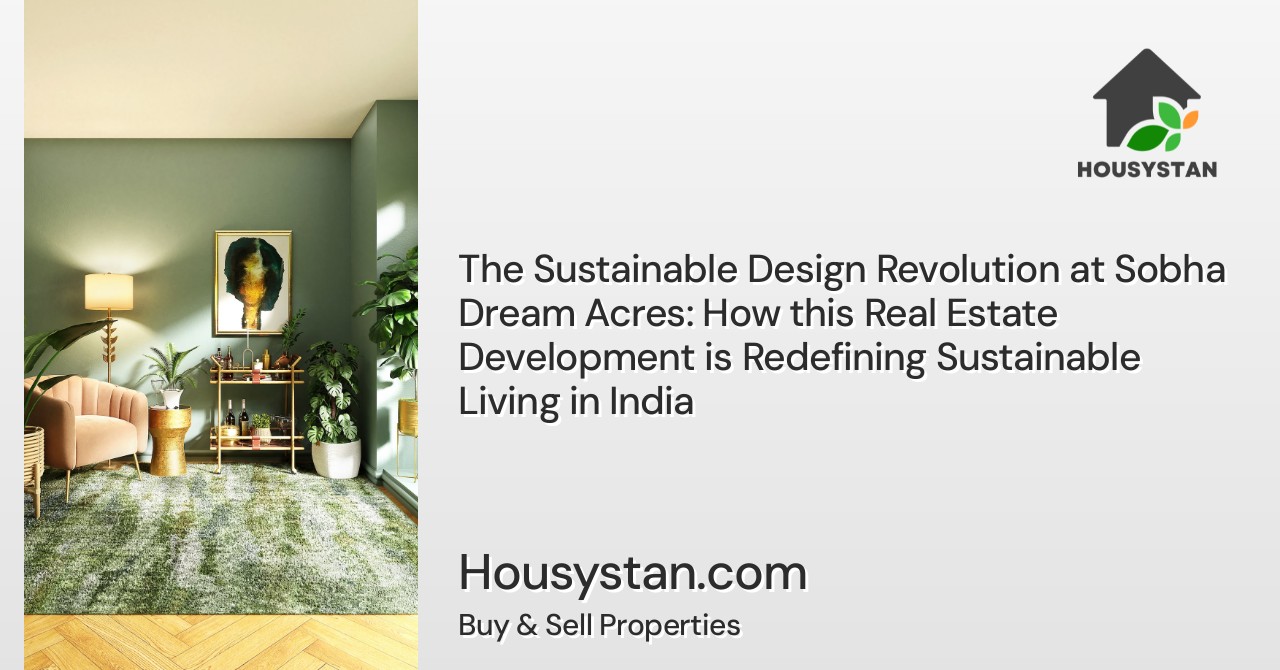The Sustainable Design Revolution at Sobha Dream Acres: How this Real Estate Development is Redefining Sustainable Living in India
Read latest blogs and articles from Housystan

The Information mentioned here was last updated on:
11/12/2025The Sustainable Design Revolution at Sobha Dream Acres: Redefining Eco-Friendly Living in Bangalore, India
Sobha Dream Acres stands at the forefront of a sustainable design revolution, setting new benchmarks for eco-friendly living in Bangalore, India. This innovative real estate development is not just about luxurious homes; it is a testament to responsible urban planning, blending modern comforts with environmental stewardship. As India’s urban landscapes expand rapidly, Sobha Dream Acres emerges as a beacon of green architecture, offering residents a lifestyle that prioritizes both well-being and ecological balance.
Located in the heart of East Bangalore, Sobha Dream Acres is strategically placed to provide easy access to key city hubs, IT corridors, and essential amenities. What sets this project apart is its unwavering commitment to sustainability. Every aspect, from architectural design to resource management, is thoughtfully crafted to minimize environmental impact. Buildings are constructed using advanced techniques that reduce energy consumption and maximize natural light and ventilation, ensuring a healthier indoor environment for families.
- Verified Tenants/Buyers
- Unlimited Property Listing
- Zero subscription/charges fee
Water conservation is a core principle at Sobha Dream Acres. The community employs cutting-edge rainwater harvesting systems, enabling efficient water use and supporting local groundwater recharge. Wastewater treatment facilities further ensure that water resources are preserved, contributing to a greener Bangalore. The meticulous landscaping features native plants, reducing the need for excessive watering and promoting biodiversity within the premises.
Energy efficiency is seamlessly integrated into every home and common area. Solar panels, LED lighting, and smart grid technologies work together to lower electricity usage and reduce the community’s carbon footprint. Residents enjoy the benefits of lower utility bills while contributing to a cleaner, more sustainable city.
Sobha Dream Acres also fosters a sense of community through green spaces, jogging tracks, and recreational facilities that encourage active, healthy lifestyles. By investing in this pioneering development, homeowners not only secure their future but also become part of a movement toward sustainable urban living in Bangalore. Discover how Sobha Dream Acres is redefining eco-conscious living and setting new standards for sustainable real estate in India today.